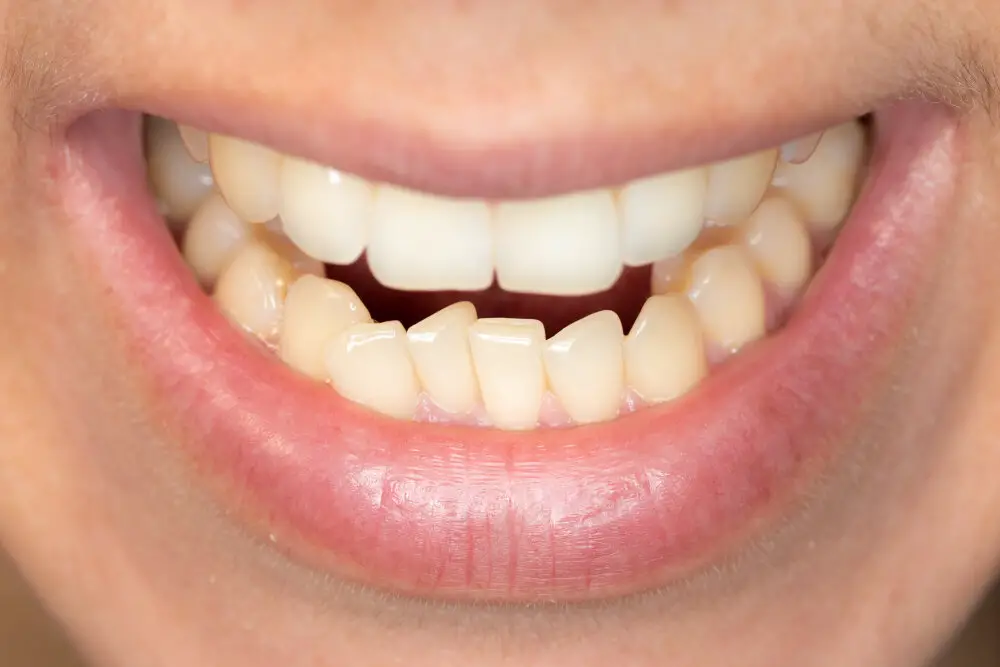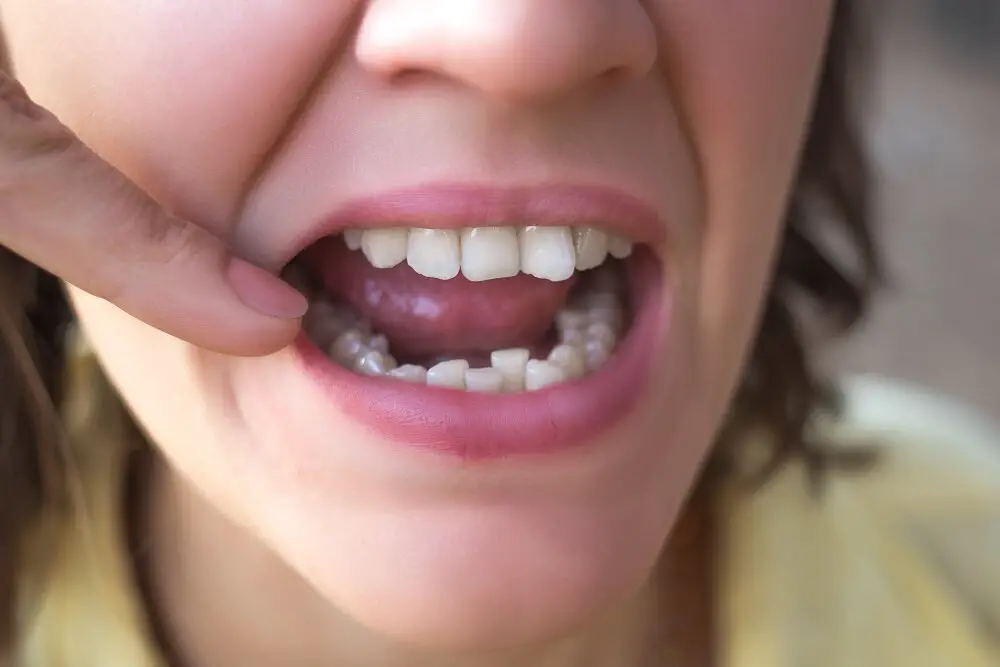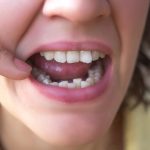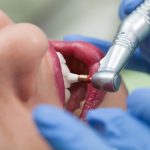Why Does My Dog Chatter His Teeth? Understanding the Causes and Solutions

Dogs are wonderful companions and loyal friends. However, sometimes they exhibit behaviors that can be puzzling to their owners. One such behavior is teeth chattering. Many dog owners have witnessed this phenomenon and wondered what it means. Teeth chattering in dogs can be caused by a variety of factors, from excitement to anxiety, and can occur in a range of contexts. Understanding the causes and solutions for this behavior can help dog owners provide the best care for their furry friends. Teeth chattering is a common behavior in dogs, and it can be seen in a variety of situations. Some dogs chatter their teeth when they are excited or happy, while others do it when they are anxious or nervous. Teeth chattering can also be a sign of pain or discomfort, or it can be a way for dogs to communicate with their owners. Whatever the cause, it is important for dog owners to understand this behavior and be able to recognize when it is happening. By understanding why their dog is chattering his teeth, owners can provide the appropriate care and attention to ensure their furry friend is happy and healthy.
Teeth chattering is a common behavior in dogs that can be caused by a variety of reasons. It is a rapid and involuntary movement of the jaw muscles that produces a clicking or chattering sound. One of the most common causes of teeth chattering in dogs is anxiety or fear, which can be triggered by loud noises, unfamiliar surroundings, or stressful situations. Additionally, teeth chattering can also be a sign of dental problems, such as tooth decay or gum disease. It is important to identify the underlying cause of teeth chattering in dogs to ensure appropriate treatment and prevent further complications.
It is crucial to understand the causes and solutions of dog teeth chattering as it can be a sign of underlying health issues, discomfort, or anxiety. Ignoring this behavior can lead to severe dental problems or behavioral issues, which can be difficult to treat later on. Therefore, identifying the root cause of teeth chattering and addressing it with appropriate solutions is essential for the dog’s overall health and well-being. Some solutions include dental care, behavior modification, and medication, depending on the underlying cause. Being proactive and seeking veterinary advice can help prevent any potential long-term consequences and ensure a happy and healthy life for your furry companion.
Normal Reasons for Teeth Chattering

One of the most common reasons for teeth chattering in dogs is excitement or anticipation. Just like humans, dogs can show their emotions through physical behaviors, and teeth chattering is just one of them. When a dog is excited, whether it’s because they’re about to go for a walk or they see their favorite toy, their body can experience tremors or shivers that may cause their teeth to chatter. This is usually harmless and should not be a cause for concern unless it happens excessively. Another normal reason for teeth chattering in dogs is a response to cold temperatures. Just like humans, dogs can feel the cold, and when they do, their bodies may shiver in an attempt to warm up. In some cases, this shivering can cause their teeth to chatter, but it’s usually nothing to worry about. However, if you notice that your dog is shivering excessively or their teeth are chattering constantly, it may be a sign that they’re too cold and need to be warmed up.
Cold weather can be uncomfortable for both humans and animals alike, and dogs are no exception. When the temperature drops, dogs may experience a range of physical and behavioral changes, including shivering, shaking, and teeth chattering. This involuntary response is often a sign that your furry friend is feeling chilly and trying to warm up. Dogs can also experience hypothermia in extreme cold conditions, which can be life-threatening. It’s important to keep your dog warm and dry during cold weather by providing them with a warm bed, blankets, and appropriate clothing. Additionally, providing them with regular exercise and keeping them hydrated can help regulate their body temperature and prevent them from getting too cold.
Excitement is a common emotion that dogs experience when they are happy, stimulated, or anticipating something. It is not unusual for dogs to express their excitement through body language, vocalization, or behavior. For instance, a dog may wag their tail, jump up and down, bark, or even chatter their teeth when they are excited. However, excessive excitement may lead to unwanted behaviors such as jumping on people, destructive chewing, or even aggression. Therefore, it is essential to understand the causes of your dog’s excitement and provide appropriate outlets for their energy and enthusiasm, such as exercise, playtime, or training.
Anticipation is a natural response for many dogs, and it can manifest in a variety of ways. Some dogs will bark, whine, or pace when they know they are about to get something they want, while others may begin to chatter their teeth. This behavior is often seen in dogs who are excited or anxious about a particular event, such as going for a walk, playing with a favorite toy, or receiving a treat. While anticipation is a normal part of a dog’s behavior, it can sometimes become excessive or problematic, leading to unwanted behaviors like jumping or biting. Understanding the causes of your dog’s anticipation and finding appropriate solutions can help you manage this behavior and keep your dog happy and healthy.
Anxiety is a common issue that many dogs face, and it can manifest in a variety of ways, including teeth chattering. Anxiety in dogs can be caused by a range of factors, such as separation anxiety, fear of loud noises, or even changes in routine or environment. Dogs with anxiety may exhibit a range of symptoms, including trembling, excessive barking, and destructive behavior. It is important for dog owners to understand the potential causes of anxiety in their pets and to work with their veterinarian to develop a treatment plan that can help alleviate their dog’s symptoms and improve their overall quality of life.
Medical Causes for Teeth Chattering

Teeth chattering in dogs can be a sign of underlying medical issues. One of the most common causes of teeth chattering is dental problems. Gum disease, tooth decay, and tooth fractures can cause discomfort, pain, and sensitivity, leading to teeth chattering. Dogs may also grind their teeth due to misaligned teeth, which can cause pain and discomfort in the jaw. If your dog is chattering his teeth frequently, it’s essential to schedule a visit with a veterinarian to rule out any dental issues. Another medical cause of teeth chattering in dogs is neurological disorders. For example, dogs with epilepsy may experience seizures that cause their teeth to chatter. Other neurological conditions that can cause teeth chattering are nervous system diseases, such as distemper or encephalitis. Dogs with these conditions may also show other symptoms, such as difficulty walking or coordination problems. If your dog’s teeth chattering is accompanied by other unusual symptoms, it’s important to consult with a veterinarian as soon as possible to diagnose and treat any underlying medical conditions.
Dental issues are a common problem among dogs that can cause discomfort and pain. If left untreated, dental problems can lead to serious health issues such as infections, heart disease, and even organ damage. Some of the common dental issues in dogs include gum disease, tooth decay, and broken teeth. These issues can be caused by poor dental hygiene, a poor diet, or genetics. To prevent dental issues, it is important to brush your dog’s teeth regularly, provide them with dental chews, and take them for regular dental check-ups. If your dog is already experiencing dental issues, it is important to consult a veterinarian for proper treatment and care.
Pain or discomfort is a common experience for both humans and animals. It is a signal from the body that something is wrong and needs attention. In dogs, pain can manifest in various ways, including teeth chattering. This behavior is often a sign of dental pain or discomfort, but it can also be a symptom of other underlying health issues. It is important for dog owners to be aware of their pet’s behavior and to take action if they notice any signs of distress or discomfort. Seeking the advice of a veterinarian can help identify the cause of the behavior and provide appropriate treatment to alleviate any pain or discomfort.
Neurological conditions refer to any disorder that affects the nervous system, including the brain, spinal cord, and nerves. These conditions can be caused by a variety of factors, such as genetics, infections, injuries, or environmental toxins. Some common neurological conditions in dogs include seizures, epilepsy, and degenerative myelopathy. These conditions can have a significant impact on a dog’s quality of life, causing symptoms such as tremors, muscle weakness, and loss of coordination. Proper diagnosis and treatment are essential for managing neurological conditions in dogs, as they can worsen over time and lead to significant disability if left untreated.
Seizures are a neurological disorder that occurs in dogs when there is abnormal activity in the brain. This can cause the dog to have uncontrollable muscle movements, lose consciousness, and experience other symptoms such as drooling, urination, and defecation. Seizures are typically caused by underlying health conditions such as brain tumors, liver or kidney disease, or genetic factors. It’s important to seek veterinary care if your dog experiences seizures, as they can be a serious and potentially life-threatening condition. Treatment options may include medication or dietary changes to manage the underlying cause of the seizures and prevent future episodes.
While medication can be a helpful tool in treating a variety of health conditions, it’s important to be aware of the potential side effects. Some medications can cause teeth chattering in dogs, among other symptoms. This is why it’s crucial to speak with your veterinarian about any medications your dog is taking and any potential side effects you should be aware of. In some cases, your vet may be able to suggest alternative medications or adjust dosages to help reduce side effects. Monitoring your dog’s behavior and reporting any changes to your vet can also help ensure that any issues are detected and addressed as soon as possible.
Behavioral Causes for Teeth Chattering

Teeth chattering in dogs is a behavioral response that can be caused by a variety of factors. One common cause of teeth chattering is excitement or anticipation. When a dog is excited or anticipating something, such as a treat or a walk, they may begin chattering their teeth as a way to release some of their pent-up energy. This behavior is often accompanied by other signs of excitement, such as wagging their tail, jumping up and down, or barking. Another potential cause of teeth chattering in dogs is anxiety or stress. Dogs that are feeling anxious or stressed may begin chattering their teeth as a way to cope with their emotions. This behavior is often seen in dogs that are experiencing separation anxiety or fear, and may be accompanied by other signs of stress, such as panting, pacing, or whining. In some cases, teeth chattering may even be a sign of a more serious underlying medical condition, such as a dental problem or neurological disorder. If your dog is exhibiting teeth chattering behavior on a regular basis, it is important to consult with a veterinarian to rule out any underlying health concerns.
Reinforcing the behavior of teeth chattering in dogs is a tricky process. Since this behavior can be caused by several underlying factors, it is essential to identify the root cause before attempting to reinforce the behavior. For instance, if the teeth chattering is due to anxiety, then reinforcing the behavior can worsen the situation. However, if the chattering is due to excitement or playfulness, then positive reinforcement can be used to encourage the behavior. It is crucial to note that reinforcing any behavior should be done with caution and only after proper assessment of the situation. Consistency and patience are essential when reinforcing any behavior in dogs, and it is always advisable to seek professional help if unsure of how to proceed.
Stress and anxiety are common problems that humans face, but they can also affect our furry friends. Dogs can experience stress or anxiety due to a variety of reasons, including changes in routine, loud noises, separation from their owner, and unfamiliar environments. Symptoms of stress and anxiety in dogs can include shaking, panting, pacing, and, in some cases, teeth chattering. It’s important for dog owners to understand the causes of their pet’s stress and anxiety and to provide them with the support and tools they need to cope, such as exercise, toys, and calming techniques like massage or aromatherapy. In severe cases, it may be necessary to seek the help of a professional dog trainer or veterinarian to address the issue.
Learned behavior refers to actions and responses that an animal acquires through training or experience, rather than being innate or instinctual. In the case of dogs, various behaviors can be learned through a combination of rewards, punishments, and socialization. Teeth chattering or jaw clacking, for example, can be a learned behavior that dogs use to communicate anxiety or excitement. It is important to understand the underlying causes of such behavior, as well as the appropriate responses to correct or manage it. With patience and positive reinforcement, owners can help their dogs unlearn unwanted behaviors and develop more appropriate ways of expressing themselves.
Attention seeking is a common behavior exhibited by dogs, especially when they are not getting enough love and attention from their owners. Dogs may chatter their teeth, bark, whine, or even become destructive when they feel neglected or left alone for extended periods. This behavior can be frustrating for pet owners, but it is important to understand that dogs are social animals that require regular interaction and stimulation to stay happy and healthy. To prevent attention-seeking behavior, pet owners should ensure that their dogs are getting enough exercise, playtime, and affection. Additionally, training and positive reinforcement can help teach dogs appropriate ways to seek attention, such as sitting or pawing for pets. By meeting their dog’s needs and giving them the attention they crave, pet owners can help prevent attention-seeking behavior and strengthen their bond with their furry friend.
Solutions for Teeth Chattering

Teeth chattering in dogs can be caused by various factors, including excitement, anxiety, or even dental problems. As a pet owner, it is essential to understand the underlying cause to address the issue effectively. One of the solutions to teeth chattering is to provide a calming environment for your dog. You can create a quiet and comfortable space for your dog to relax, away from any stressful stimuli. Additionally, you can use calming aids such as pheromone diffusers or calming music to soothe your dog’s nerves. Another solution for teeth chattering is to address any dental issues your dog may be experiencing. A visit to the veterinarian can help identify any dental problems that may be causing discomfort and teeth chattering. Your veterinarian may recommend teeth cleaning, extractions, or other dental procedures to alleviate the problem. Additionally, it is essential to maintain good dental hygiene for your dog by regularly brushing their teeth and providing dental chews or toys to reduce tartar buildup. By addressing any underlying dental problems, you can help prevent teeth chattering and ensure your dog’s overall health and well-being.
Addressing underlying medical conditions is crucial when it comes to treating a dog that is chattering his teeth. This is because teeth chattering is often a symptom of an underlying medical condition such as dental problems, pain, or neurological disorders. Dental problems such as periodontal disease can cause pain and discomfort, which can lead to teeth chattering. Pain, on the other hand, can be caused by diverse factors such as arthritis, joint pain, or injury, which can also lead to teeth chattering. Neurological disorders such as seizures or vestibular disease can also cause teeth chattering in dogs. Therefore, it is essential to identify the root cause of the teeth chattering and address the underlying medical conditions to ensure the dog receives proper treatment and relief.
Training and behavior modification can be effective solutions to address a dog’s teeth chattering behavior. Training can help teach the dog new behaviors and reinforce positive actions, while behavior modification aims to change the underlying cause of the behavior. For example, if the chattering is caused by anxiety or fear, behavior modification techniques such as desensitization and counterconditioning can be used to help the dog feel more comfortable in the triggering situation. Additionally, training exercises like focus training and relaxation techniques can help the dog learn to better manage their emotions and reduce the likelihood of chattering. In combination, training and behavior modification can provide a comprehensive approach to address a dog’s teeth chattering behavior and improve their overall well-being.
Providing comfort and security to your dog is crucial in ensuring their overall well-being. When a dog is anxious or stressed, they may display behaviors such as teeth chattering, trembling, or pacing. To alleviate these symptoms, it’s important to create a calming environment for your furry friend. This can be achieved through routines and consistency in their daily activities, providing a comfortable and safe space for them to rest, and using calming aids such as pheromone diffusers or calming supplements. Additionally, spending quality time with your dog, engaging in activities that they enjoy, and offering plenty of physical affection can help to reduce their stress levels and promote feelings of comfort and security.
If your dog is chattering his teeth, it’s important to seek professional help from a veterinarian or animal behaviorist. Teeth chattering can be caused by a variety of factors, including dental issues, anxiety, pain, or neurological issues, and only a trained professional can accurately diagnose and treat the problem. Ignoring the issue or trying to address it on your own can lead to further health problems or behavioral issues in your dog. By seeking professional help, you can ensure your furry friend receives the best possible care and treatment for their teeth chattering.
There are several possible causes of why a dog may chatter their teeth, including anxiety, excitement, dental problems, and medical conditions. It is important to identify the underlying cause before determining the appropriate solution. For example, if the dog is chattering their teeth due to anxiety, behavior modification techniques such as desensitization and counter-conditioning may be helpful. However, if the dog has dental problems, a visit to the veterinarian may be necessary to address the issue. Additionally, providing the dog with appropriate outlets for their energy and ensuring they receive proper dental care can help prevent teeth chattering. Ultimately, understanding the causes and solutions of teeth chattering in dogs can lead to a happier and healthier pet.
If your dog’s teeth continue to chatter, seeking help from a veterinarian or animal behaviorist is crucial. Teeth chattering can be a sign of underlying health issues such as dental problems or pain, and ignoring it could result in serious consequences for your pet’s well-being. Additionally, teeth chattering can also be a manifestation of anxiety, fear, or excitement, and seeking the assistance of a professional can help identify and address the root cause of the behavior. Overall, seeking help early on can lead to better outcomes for your furry friend and ensure their continued health and happiness.
As a pet parent, it’s important to provide a safe and comfortable environment for your furry friend. This not only includes providing adequate shelter, food, and water, but also ensuring that your pet feels secure and loved. One way to achieve this is by creating a peaceful and stress-free living space for your dog. This can be achieved by providing a cozy bed, interactive toys, and a designated play area. Additionally, it’s important to establish a routine for your pet, including regular exercise and playtime, as this can help reduce anxiety and promote overall well-being. By taking these steps, you can help ensure that your furry friend feels happy, healthy, and secure in their home.
Conclusion

In conclusion, understanding the reasons behind a dog’s teeth chattering behavior is crucial for their overall health and well-being. While it can be an indicator of a medical issue, it can also be a manifestation of excitement, anxiety, or even happiness. Thus, paying close attention to their body language and behavior can help identify the underlying cause and provide the necessary solutions. Whether it is a visit to the vet, increased exercise, or simply spending more quality time with your furry friend, taking action can improve their quality of life and strengthen the bond between you and your beloved pet.






